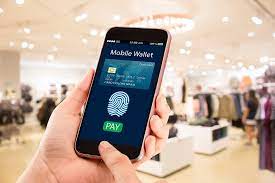In today’s fast-paced world, easy mobile payment options are gaining popularity, transforming how we do financial transactions. These technologies offer a convenient and effective alternative to traditional payment methods like cash and credit cards. Simple mobile payment systems, which use mobile technology, have transformed how consumers and businesses manage their financial transactions. This article examines the benefits, popular solutions, future trends, and limitations of easy mobile payments, emphasizing their growing importance in modern finance.
Understanding Simple Mobile Payments
Simple mobile payments are made using mobile devices such as smartphones or tablets to execute financial transactions. This technology eliminates the need for actual currency or credit cards by allowing customers to pay via mobile applications. Mobile payment solutions use a variety of approaches, including mobile wallets, QR codes, and near-field communication (NFC). These technologies simplify the payment process, making transactions faster and more accessible for customers in a range of scenarios, including in-store purchases and internet transactions.
Advantages of Mobile Payment Solutions:
One of the primary benefits of simple mobile payment systems is their convenience. Users can complete transactions quickly and easily via mobile devices, eliminating the need to carry cash or numerous credit cards. This ease of use applies to a variety of payments, including in-store purchases, online buying, and peer-to-peer transfers. Many mobile payment apps include extra features, such as digital receipts and reward programs, which improve the entire user experience and provide value.
Security is another significant advantage of mobile payment solutions. These systems frequently incorporate advanced security methods, such as encryption and tokenization, to secure user information. For example, mobile wallets employ unique tokens rather than actual credit card data during transactions, reducing the risk of fraud. Furthermore, many mobile payment systems include biometric verification, such as fingerprint or facial recognition, to ensure that only authorized users complete transactions. These security elements serve to instill trust and confidence in people.
Popular Mobile Payment Solutions.
Several mobile payment solutions have emerged as market leaders, providing customers with dependable and simple ways to manage their transactions. Apple Pay, Google Pay, and Samsung Pay are among the top mobile wallets for securely storing credit or debit card information. These platforms are widely accepted by stores and online merchants, making them useful for mobile payments. Users may quickly add payment cards to these wallets and complete purchases with a single tap or scan.
In addition to mobile wallets, peer-to-peer payment apps such as PayPal and Venmo have grown in popularity due to their capacity to facilitate personal transactions. These apps let users to send and receive money instantaneously, making them great for bill splitting, service payments, and fund transfers to friends and family. The integration of these apps with social media platforms has streamlined the payment process by allowing users to execute transactions immediately within their preferred social networks.
Future Trends for Mobile Payments
The future of easy mobile payment technology is full with exciting possibilities, as innovations transform the market. One prominent development is the incorporation of artificial intelligence (AI) and machine learning into mobile payment systems. AI can analyze transaction data to discover trends and abnormalities, which aids in fraud detection and prevention. As AI technology advances, it will play an important role in improving the security and efficiency of mobile payments, giving users even more protection and convenience.
Another exciting development is the possible application of blockchain technology in mobile payments. Blockchain’s decentralized structure promotes transparency and security, potentially lowering transaction fees and processing times. As blockchain technology advances, its integration with mobile payment systems may result in major improvements in transaction processing and financial inclusion. This combination of blockchain and mobile payments has the potential to alter the financial industry, opening up new opportunities for both consumers and enterprises.
Challenges for Mobile Payment Systems
Despite their many benefits, simple mobile payment systems confront various problems that must be solved. One major difficulty is the requirement for widespread adoption and interoperability across multiple devices and platforms. While major mobile payment options are widely recognized, some smaller merchants and localities may not support all methods, making mobile payments less convenient and effective for customers in some areas.
Privacy and data security are also key issues. Although mobile payment systems use enhanced security safeguards, the possibility of data leaks and assaults persists. Users must take proactive measures to protect their personal information, such as adopting strong passwords and securing their devices. Continuous upgrades and improvements to security methods will be critical for preserving user trust and protecting sensitive data.
Regulatory and Compliance Issues
As mobile payments gain popularity, regulatory and compliance challenges become more critical. Governments and financial organizations are enacting legislation to safeguard customers and maintain the stability of digital payment systems. Compliance with legislation such as the General Data Protection Regulation (GDPR) and the Payment Services Directive 2 (PSD2) is critical to ensuring the integrity and security of mobile payment systems. These regulations provide strong guidelines for data privacy and payment security, ensuring that mobile payment companies meet high standards.
Importance of Consumer Education
Consumer education is critical to the effective acceptance and use of simple mobile payment solutions. Many consumers may be unfamiliar with the benefits and functionality of mobile payments, as well as how to use them securely. Providing clear, easily accessible information on mobile payment choices, security standards, and the benefits of these systems can boost user confidence and adoption. Financial institutions, mobile payment providers, and consumer advocacy organizations can all help to educate users and promote mobile payment growth.
Conclusion
Simple mobile payment solutions have transformed how we conduct financial transactions, providing unprecedented convenience and security. From mobile wallets to peer-to-peer payment apps, these technologies have expedited the payment process while improving the entire user experience. As technology advances, we may expect more advancements that will further incorporate mobile payments into our daily lives. While issues persist, the advantages of mobile payments make them an important tool in modern financial management. Adopting these improvements would not only enhance transaction experiences, but will also pave the road for a more connected and efficient financial sector.









